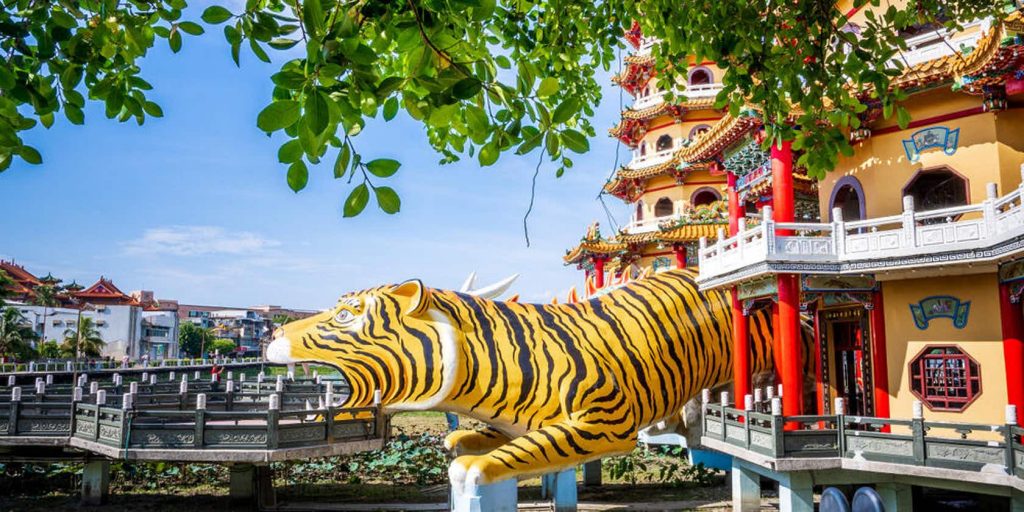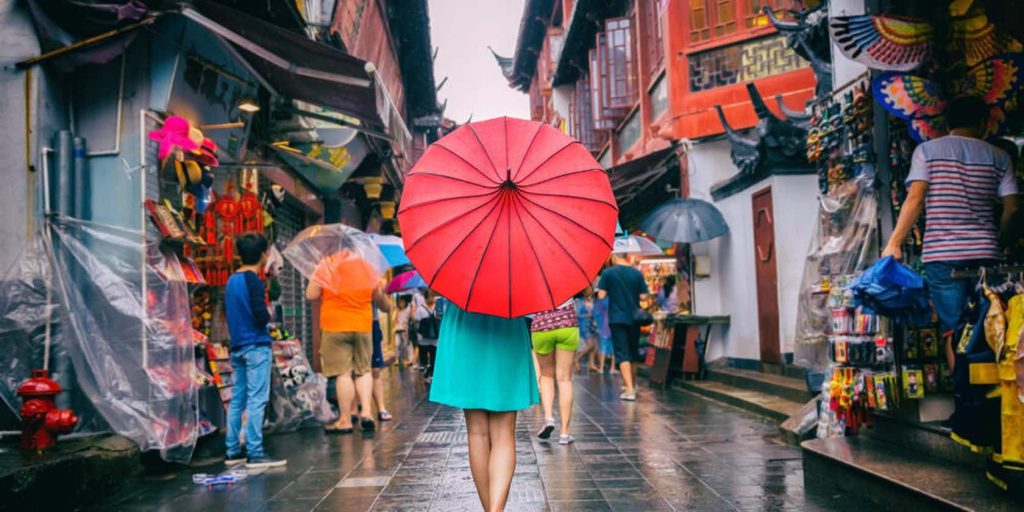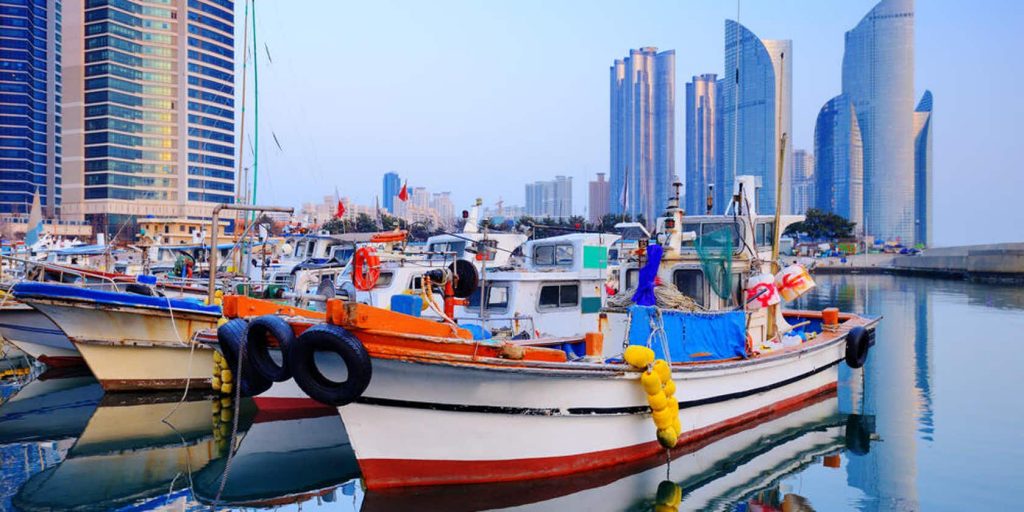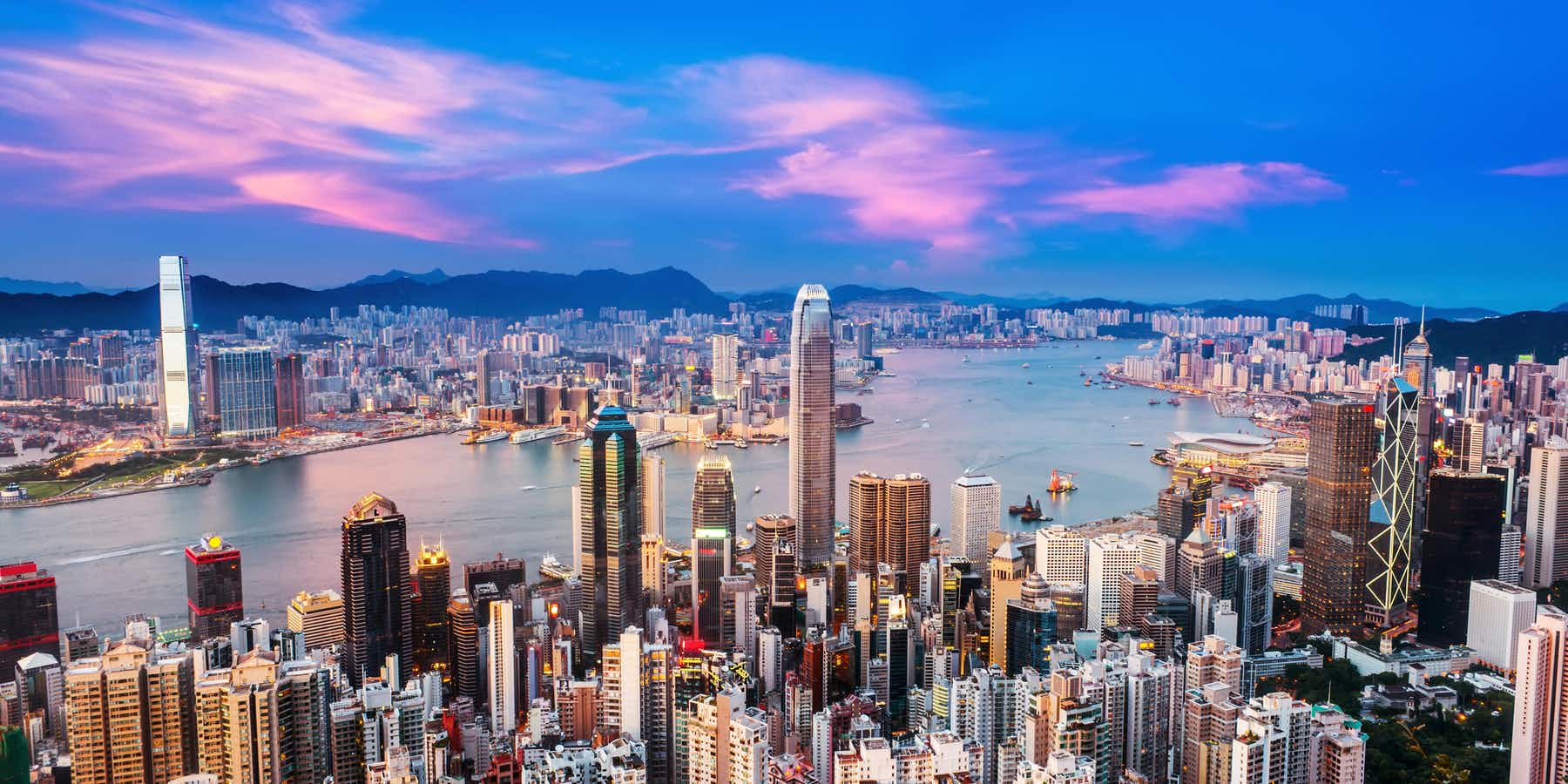When Cruise Critic landed a sponsored content deal with Silversea Cruises, they asked me to write a guide to 10 key ports within Asia.
Whether you’re booking a nine-day trip from Hong Kong to Ho Chi Minh City or setting aside two glorious weeks for an unforgettable journey from Bali to Tokyo, Silversea’s Asia itineraries offer a peerless selection of celebrated ports. What follows are 10 of our favourites, which you can explore via organised shore excursions or by asking your ship’s concierge desk to hire a private car and guide. There aren’t enough hours in the day to experience it all, but it’s worth trying.
Hong Kong

Experience a classic…
The tram that takes people up to The Peak, a swanky neighborhood of glossy malls and multimillion-dollar homes, has put the “fun” in funicular for more than 130 years. The biggest draw is Sky Terrace 428, Hong Kong’s highest viewing platform; head up here for obligatory photos of Victoria Harbour and Hong Kong’s iconic skyline and then pick up the 2.2-mile Peak Circle Walk, a tree-shaded path with knockout views and comparatively few tourists.
Now go deeper...
There are no monks milling about the laymen-led Man Fat Sze temple in Sha Tin, a district located in Hong Kong’s New Territories, but the translation of its name in English — Ten Thousand Buddhas Monastery — is no exaggeration. Some 13,000 statues dot the grounds at this sprawling temple complex, which includes five temples, four pavilions, a nine-tiered pagoda and a turtle pond.
Of special note are the 500 wildly expressive, human-sized statues lining the 431 steps that lead to the top — a climb made all the more enchanting because its cuts through a bamboo forest. Once you reach the main altar, look for the robed figure embalmed in Chinese lacquer, painted in gold leaf and seated in the lotus position inside a glass cube. That’s the temple’s late founder, Rev. Yuet Kai, preserved here for all eternity. On your walk back to Sha Tin station, stop for a set lunch or hot pot dinner at Shing Kee Noodles, a family-run restaurant adored by locals.
Malaysia's Penang Island

Experience a classic…
At the Pinang Peranakan Mansion, visitors explore the former home of tin-mining tycoon Chung Keng Quee. One of George Town’s richest men in the late 19th century, Quee was a fan of both Chinese and European design. His exquisite tastes are reflected in more than 1,000 antiques and collectibles, as well as the house’s lovingly restored interior of carved wood panelling, ceramic-tile floors and elaborate wrought iron. After touring his dream house, head to Tek Sen, about 10 minutes away. The always-busy restaurant serves an encyclopedia’s worth of roasted, stir-fried and sauteed delicacies.
Now go deeper...
You don’t have to be a guest of the boutique hotel Cheong Fatt Tze — nicknamed The Blue Mansion because of its beautiful blue paint job — to see its grand interior. How grand, you ask? Grand enough to earn a UNESCO heritage award and an award for design excellence from the Malaysian Institute of Architects, plus a cameo in the Catherine Deneuve film “Indochine.” Guided tours are given in English three times a day (11 a.m., 2 p.m. and 3:30 p.m.), and while they don’t include all 38 rooms, there’s more than enough ground covered in 45 minutes to bring the property’s history alive. Like the aforementioned Peranakan house, the Blue Mansion is named after another self-made millionaire from the late 1800s. Of special note are the Gothic louvred windows, art nouveau accents, geometric flooring and original textiles that took a full six years to restore.
Bali

Experience a classic…
Members of Ubud’s royal family still live in the east wing of Puri Saren Agung, but the rest of the palace is devoted to cultural performances. (Former King Ida Tjokorda Putu Kandel, a great patron of the arts in the early 19th century, would be proud.) Check the calendar ahead of your arrival for Balinese dance shows, traditional gamelan concerts and more.
Now go deeper...
Before artist Don Antonio Blanco, aka the Dali of Bali, died in 1999, he turned his eccentric hilltop estate into the Blanco Museum. With more than 300 “love ’em or loathe ’em” paintings in the collection (Michael Jackson was a fan of Blanco’s work, mind you), not to mention the exotic birds flitting about his manicured gardens, you’ll need a few hours to take everything in. The ideal way to end the outing is with an Indonesian tasting menu at Blanco par Mandif, the fine dining restaurant next door, owned by Blanco’s son Mario. Dishes include hand-pulled noodles topped with skipjack tuna and lemon basil, and Peking duck that’s been aged for 21 days and served with sambal matah and a bracing galangal broth.
Osaka

Experience a classic…
Dotonbori, the throbbing, neon-lit heart of Osaka, is a photographer’s dream after dark. But let’s be real — most travelers come here for the food. The canalside area serves world-class versions of grilled crab legs, fugu (blowfish), takoyaki (fried or grilled octopus balls) and okonomiyai (savory pancakes griddled with seafood and pork belly). Join whatever queues are the longest, and don’t forget to take photos of the neighbourhood’s iconic signage, including the Glico running man and Kani Doraku’s giant animatronic crab.
Now go deeper...
College graduates and cheap eats connoisseurs alike will find much to love at the Cup Noodles Museum on the outskirts of Osaka. Not to be confused with the ramen museum in Yokohama, this tribute to Taiwanese–Japanese business magnate and Cup Noodles founder Momofuku Ando is fascinating. Displays are written in Japanese, with English audio guides available. While admission to the museum itself is free, for a few hundred yen, you can enter the “factory,” decorate your own polystyrene cup with a peel-off lid and customise the ramen and freeze-dried toppings that go inside of it. A quirky but memorable souvenir. If time permits, try to tackle Kaiyukan, one of the world’s largest aquariums. Its 470-species collection of sea creatures is world-class and worth a look no matter what your age.
Bangkok

Experience a classic…
Thailand’s best-known expat, silk merchant Jim Thompson, disappeared without a trace during a trip to Malaysia in 1967, but his love of Southeast Asian art and architecture lives on. The half-acre Jim Thompson House is one of Bangkok’s most beloved tourist attractions. The historic compound comprises six traditional teak structures and looks exactly the way Thompson left it more than half a century ago. It stands in stark contrast to the high-rise condo buildings and shopping malls that have sprouted up around it.
Now go deeper...
Speaking of shopping, the malls in Bangkok are among the finest in Asia. The gorgeous Siam shopping complex, in particular, houses three notable sub-malls: Siam Paragon (best for luxury goods), Siam Center (best for trendy fashions from homegrown labels like Flynow III) and Siam Discovery (the hippest of the bunch and so well-designed that it seamlessly blends apothecary goods, streetwear, housewares and more). Also nearby: the excellent Bangkok Art and Culture Centre, which regularly presents the work of provocative Thai artists alongside their international counterparts.
Singapore

Experience a classic…
If Steven Spielberg designed a nature park for the not-so-distant future, it’d probably look something like Singapore’s Gardens by the Bay. Among its many renowned attractions is a concrete-and-steel Supertree Grove that illuminates the sky at night and a Flower Dome that broke the Guinness World Record for the largest glass greenhouse. Also within walking distance: white-glove fashion flagships at The Shoppes at Marina Bay Sands and Singapore’s only whisky specialist, The Whisky Distillery.
Now go deeper...
Another spectacular merging of city and nature, minus all the tourists, can be found on the Southern Ridges. The elaborate hiking trail cuts a 6.2-mile path along the southern ridge of Singapore, linking Mount Faber Park, Telok Blangah Hill Park, HortPark, Kent Ridge Park and the Labrador Nature Reserve. If you can tolerate the year-round humidity, the panoramic views are astounding, and there is always wildlife to spot: The Ridges are home to 43 bird species alone. (Urban jungle, indeed!) Of course, no self-respecting foodie would leave Singapore without paying a visit to one of the republic’s multicultural hawker centers. From the touristy Maxwell Food Centre to the more off-the-beaten-path Old Airport Road Food Centre, the options can be overwhelming. Ask your ship’s concierge desk to make a recommendation based on your day’s activities.
Kaohsiung, Taiwan

Experience a classic…
If you went to Kaohsiung and didn’t visit Lotus Pond, did you even go? The over-the-top architecture, which includes dragon- and tiger-shaped pagodas, plus two four-story octagonal Spring and Autumn Pavilions perched over a man-made lake blooming with lotuses, is an ode to both Confucianism and 1950s kitsch. Additional structures, like the colorful Pei Chi Pavilion, depict Daoist deities like Xuan Wu, whose sword alone measures 126 feet tall.
Now go deeper...
Kaohsiung’s harborside Pier-2 Art Center is a head-on collision of creativity and commerce, ensnaring hordes of Insta-tourists and smartphone-toting locals. Similar in spirit to Beijing’s 798 Art District, it’s a master class in reclaiming space, where more than two dozen former sugar and fish meal warehouses now host roving contemporary art exhibitions and live music festivals. The permanent residents include coffee shops, avant-garde galleries and trend-chasing boutiques. If nothing else, P-2 is a good place to pick up design-y souvenirs like block-printed stationery and hand-thrown ceramics.
Ho Chi Minh City

Experience a classic…
The harsh reality of the Vietnam War, and subsequent fallout, are on full display at sites throughout HCMC, including the warts-and-all War Remnants Museum and the heavily touristed Cu Chi tunnel system, which served as the underground base for the Viet Cong. Both offer alternative interpretations of what transpired during one of the world’s most devastating wars and may well differ from what you learned in U.S. history class.
Now go deeper...
The imposing government complex at the center of old Saigon was called the Independence Palace until its fall in 1975, when a North Vietnamese tank burst through the front gate and the war came to a dramatic close. The frozen-in-time complex, now called the Reunification Palace, is open to the public for self-guided tours. The devil is in the 1960s detailing, from the airy architecture to the rooftop helipad that looks like it was plucked out of a James Bond flick. Should you find yourself in need of a drink after touring the complex, sidle up to the bar at Pasteur Street Brewing Co. The progressive brewhouse incorporates local and regional ingredients like lemongrass, dragon fruit, cinnamon and black peppercorn into its beers.
Beijing

Experience a classic…
One of the most popular sites in central Beijing is the Palace Museum, which makes 60 percent of the Forbidden City’s 8,728 rooms and 980 buildings viewable to the public. The collection is a must-see, with wondrous cultural artifacts spanning two dynasties (Ming and Qing), 24 emperors and nearly 500 years. Decompress from a day of sightseeing at the nearby Siji Minfu, one of the city’s top restaurants for roast duck. You won’t soon forget the chef’s carving skills — or the tasty skin that shatters like glass.
Now go deeper...
China’s bourgeois-bohemian community, dubbed “BoBos,” has made the 798 Art District ground zero for (relatively) free expression since the early 2000s. That’s when an influential group of entrepreneurs began flipping abandoned, Bauhaus-style buildings into Beijing’s trendiest galleries, cafes, shops and clubs. Because of Instagram and WeChat (China’s messaging app), the art district is almost too busy these days, but don’t let that deter you from exploring its delicate balance of art and artifice. Leading galleries like Ullens Center for Contemporary Art, 798 Space and Beijing Tokyo Art Projects deserve top billing; the not-so-edgy street art is secondary.
If you need a break from traditional dishes and far-out flavors, Timezone 8 has been serving Japanese and Western comfort food since 798’s salad days.
Busan, South Korea

Experience a classic…
Be prepared to dodge a few (hundred) selfie sticks along the most photogenic stretches of Gamcheon Culture Village, the Machu Picchu of Busan. Those rows upon rows of pastel houses, nestled into the hillside, are like catnip for the Instagram set, but the real reason to visit the so-called “culture village” is the public art, made by local artists and students and installed throughout the neighborhood in 2009. Pick up a map at the tourism center before setting out to ensure you don’t miss any key pieces.
Now go deeper...
For a more challenging photo op, head to Jagalchi Market, the largest seafood market in South Korea. Here you’ll find dozens of fishmongers sloshing around in rubber gloves and galoshes, laying out extraordinary spreads of still-writhing sea bream, squid, sea squirts, octopus, abalone, crab, lobster, eel and sea worms. (That last one is something only Andrew Zimmern would appreciate.) If something catches your eye, buy it and then head upstairs to have the item cooked at one of the casual restaurants operating directly above the market. Don’t worry about picking the perfect eatery: Most of the seafood restaurants here offer identical preparations at identical prices.

